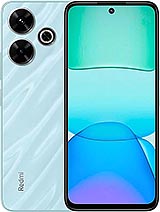Virtual reality development is now a useful tech that benefits users with immersive experiences and transports them to different worlds. From gaming to education, healthcare to training simulations, the potential applications of VR are vast and varied. However, as exciting as VR development can be, it is not without its challenges.
VR experts often have to deal with complicated situations that range from technical limitations of hardware to user experience issues to avoid discomfort or disengagement.
.
Those who perfectly understand these challenges and find effective solutions to them will be capable enough to lead in the niche of development.
In this blog, we will explore some of the most common challenges faced in VR development and share actionable strategies to overcome them.
1# Adapting to VR Hardware Limitations
VR headsets have different sizes and shapes. It also includes distinct requirements related to power, resolution, and views. With a large variety of options, it becomes hard to decide what best suits your needs. Experts in virtual reality development should carefully balance performance and visual quality to ensure it runs flawlessly across various devices.
Lower-end VR headsets often struggle with high-fidelity graphics, leading to lag or a clunky experience. A healthy way to deal with this is by lightening the load on the device. Individuals just have to simplify 3D models, use lower-resolution textures, and optimize shaders to reduce the detail of distant objects and balance performance.
Another smart approach is tailoring experiences to each device’s specific strengths and weaknesses, allowing users to enjoy the best possible quality without overtaxing the hardware.
This might mean creating different builds or configurations for different VR headsets, which is a bit more work upfront but can pay off in a smoother, more accessible experience.
2# Reducing Motion Sickness
It would not be wrong to assume this is one of the most backbreaking hurdles in the context of virtual reality development. When an individual’s visual perception is not aligned with the body’s feelings, it can derail their interest by causing dizziness and nausea. To remedy this, we advise you to reduce this discomfort by maintaining a steady, high frame rate of around 90 frames per second, if possible.
Another tactic is to use smooth, VR-friendly movement styles like teleportation or quick dashes instead of free-form walking, which can feel disorienting in VR. Adding static visual cues like a fixed horizon line can also help ground users and keep nausea at bay.
Since every person’s tolerance varies, frequent playtesting with a wide range of users is essential to identify problem areas and refine interactions. Taking the time to make your VR experience comfortable can mean the difference between users loving it or avoiding it entirely.
3# Designing Natural Interactions and Intuitive UX
UI/UX is the first impression of a digital product; it is not as simple as planning for a traditional app or game. Users today have gone modern and want products to let them feel natural and immersive. However, the core issue lies here: translating traditional controls or menus into VR can feel clunky and out of place.
In VR, you can replace typical UI elements with spatial interactions that better match the 3D environment, like gaze-based selection or gestures instead of pressing a button. Individuals who prioritize user comfort at each stage are more likely to excel in this. For instance, you can add UI elements within easy reach and at natural angles to avoid causing neck or arm strain. These small touches are helpful and make a big difference in users’ psychology, making them feel in control and at ease.
4# Working Around Real-World Constraints
VR experiences are created for virtual worlds, but users are still very much bound to the physical realities of their environment. Some users have large open play areas, while others are confined to a small corner of a room. As a developer, it’s important to keep these varied spaces in mind. Using built-in guardian systems, like Oculus’ Guardian or SteamVR’s Chaperone, can help alert users when they’re approaching the boundaries of their play area, ensuring they stay safe without breaking immersion. Another smart move is offering different modes—like “seated” or “standing”—which allow users to adapt the VR experience based on their physical space. Flexibility in movement and interaction styles not only makes the experience safer but also broadens your audience, giving more people the chance to enjoy VR, no matter their setup.
5# Managing High Costs and Technical Complexity
Developing in VR is often more resource-intensive than traditional app or game development. It requires a team with specialized skills in 3D modeling, spatial audio, and optimized coding, which can make VR projects quite costly.
To help manage expenses and streamline the process, many virtual reality development experts turn to established VR platforms like Unity or Unreal Engine. They include VR development kits, tutorials, and a range of pre-built assets to save half your time and money.
Open-source libraries such as VRTK and MRTK are useful tools for everyday VR interactions to avoid creating everything from scratch.
Primarily, starting with a maximum viable product with must-have features is wise to keep budgets under control and prioritize improvements based on user feedback.
6# Ensuring Cross-Platform Compatibility
With a massive number of VR devices, each with unique controls and tracking systems in the market, it might be tough to decide what works better for your VR app across all platforms.
Here, cross-platform development frameworks like OpenXR come in handy. OpenXR provides a standard for virtual reality development to eliminate custom code needs for each device. This, as a result, is going to save a lot of time and effort.
Structuring your code and assets is also a valuable practice that is modular and easy to adjust for each platform.
Input mapping, for instance, may vary between devices, but with modular design, these adjustments become more accessible to handle.
This approach makes it possible to offer a consistent experience across different VR headsets, allowing more users to access and enjoy your app without compromising quality.
7# Creating Immersive Audio Design
Sound in VR isn’t just about adding atmosphere—it’s central to immersion. In VR, sound needs to feel as real and responsive as everything else. Achieving this level of realism requires using spatial audio tools, like Oculus Spatializer or Steam Audio, which let users perceive sounds coming from specific directions, heightening the sense of presence in the virtual world. Good audio design can also guide users through the experience. Small audio cues can help users know when they’re making the right choices or direct their attention to different parts of the virtual space. These subtle cues can keep users oriented, engaged, and more connected to the experience. Audio done right adds depth to VR, making everything feel more natural and immersive, and can turn an ordinary VR project into something truly memorable.
Wrapping Up
Virtual reality development is a rewarding endeavor for those who put in excellent efforts and an ample amount of time. However, it brings a fair set of challenges to the table, like optimizing hardware, designing natural interactions, and managing costs. For this purpose, you can create impressive and accessible experiences to entice users.
For those waiting for the right time to make an entry into virtual reality development, it is now or never a moment to get started with it.
Read More: App Development Cost


